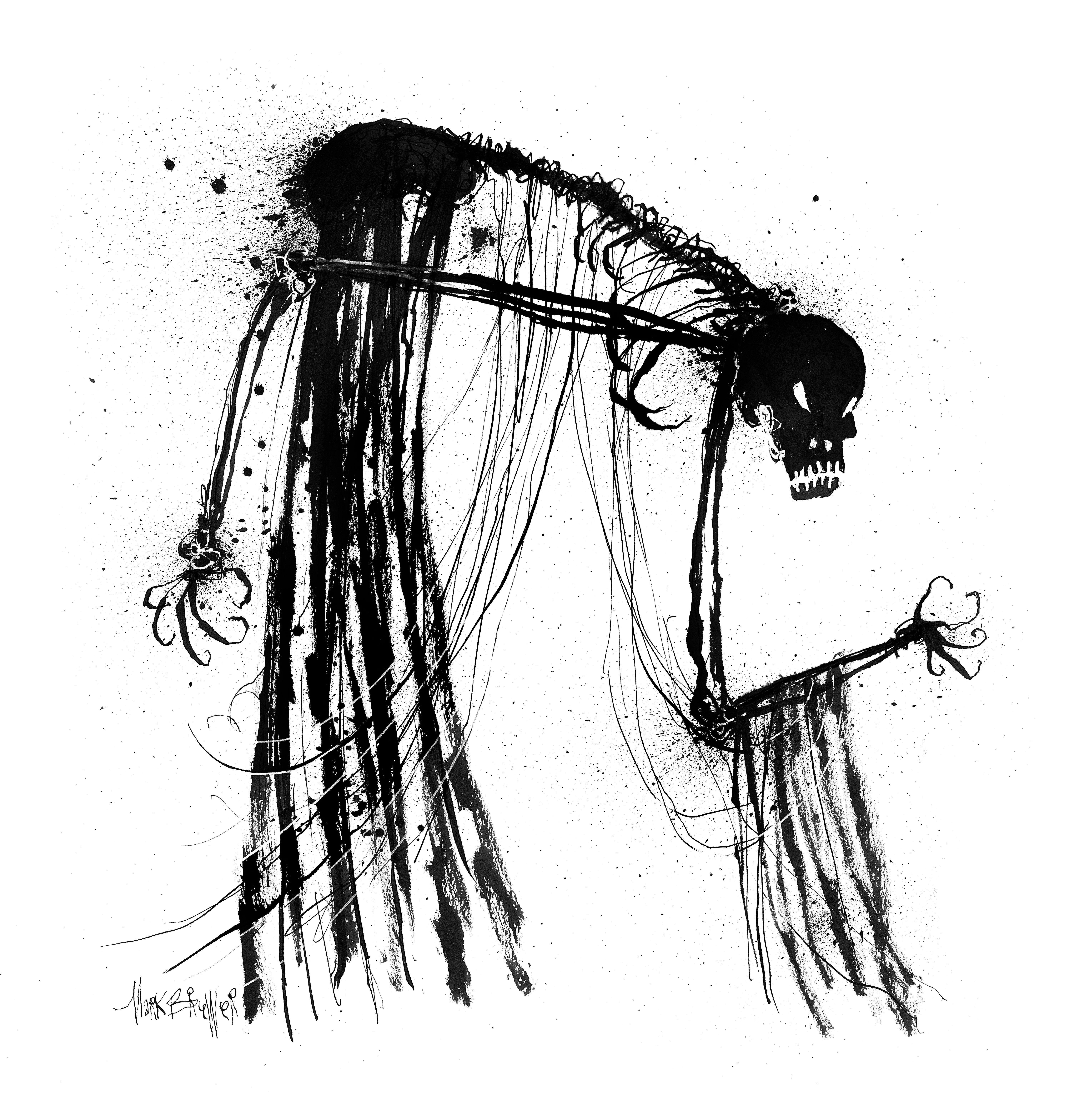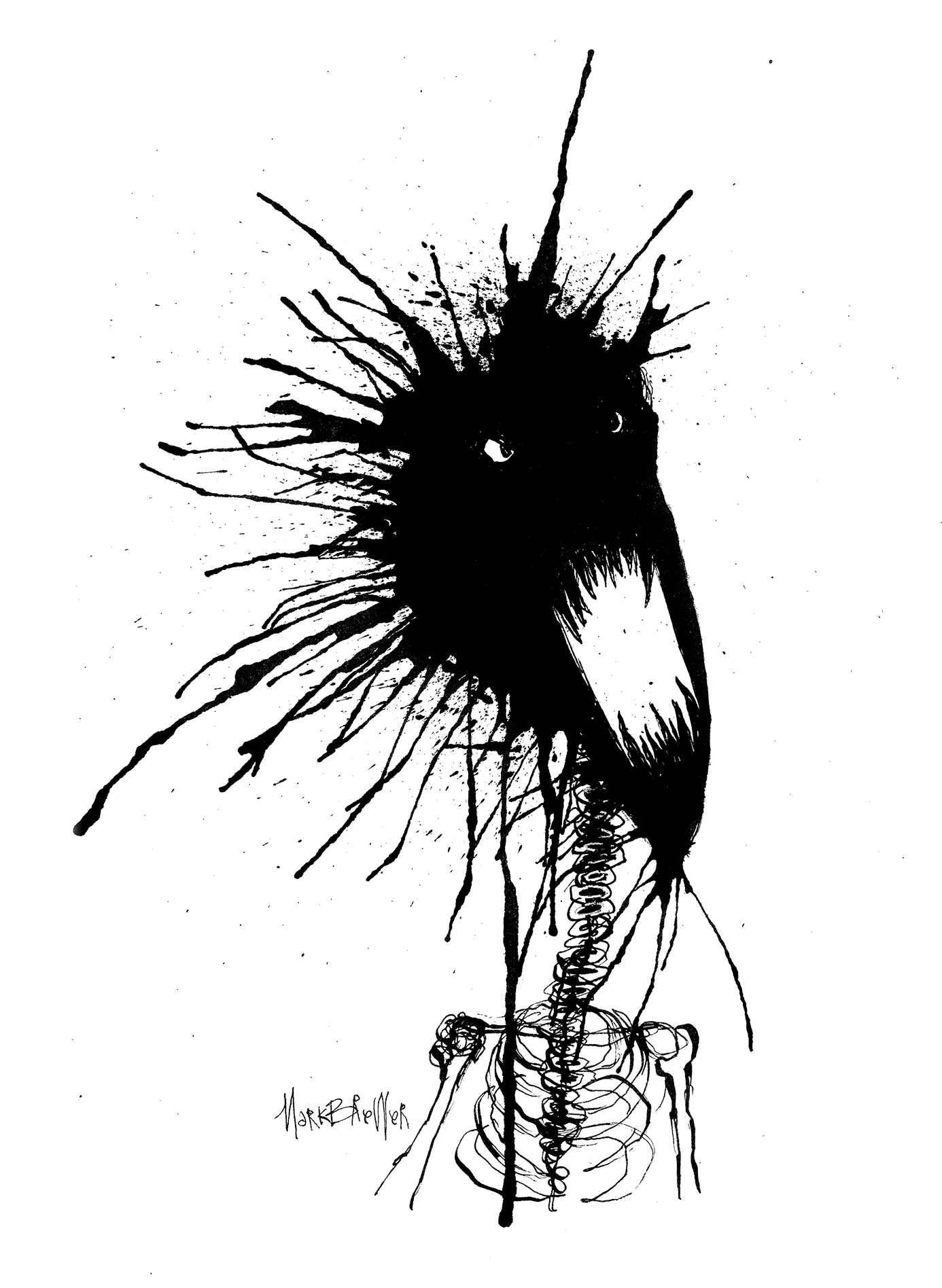
5 minute read
Voice of the Artist: Mark Brewer

Voice of the Artist: Mark Brewer
Putting a spin on sin
By Andrea Iglar
Vice or virtue? It’s a matter of perspective.
Wrath can represent intense anger, but it also can embody strength.
Gluttony may signify excess, or on the flip side, enjoyment of life’s pleasures.
Greed can symbolize a desire for wealth—or reflect the pursuit of success.
For his “7 Deadly Sinz” collection that launched in October, illustrator Mark Brewer created black ink drawings representing the concepts of pride, greed, lust, envy, gluttony, wrath and sloth.

The creatures may appear a bit scary at first glance, but the artist’s accompanying text puts a positive spin on the monsters, reflecting the complexities of human desire and emotion.
“You look at the seven deadly sins, and on the surface, they’re not good,” Brewer said. “But if you look at the descriptions, I’ve turned them into a good.”
Brewer writes on his website that the traditional vices warn of excess, while holding “a spark of ambition, passion and self-expression.”
At times, it took exactly those qualities—ambition, passion and self-expression—for Brewer to develop his style and sustain a decades-long career as an artist.
A resident of South Fayette’s Hunting Ridge neighborhood since 2001, Brewer grew up in Fairfield County, Connecticut, where he discovered a desire to paint and draw.

He published editorial cartoons in high school and later honed his skills with renowned illustrator Guy Gilchrist— best known as Jim Henson’s cartoonist creator of the Muppets comic strip. Here, Brewer opportunity to work on the Muppets, Teenage Mutant Ninja Turtles and other well-known licensed characters. Brewer was eager to learn, so he inked backgrounds and helped where he could with not only the art but also mundane office tasks. At home, he constantly practiced drawing.
“I was just ambitious,” Brewer recalled.
(There it is: the spark of ambition!)
Moving forward with his artistic aspirations, Brewer self-syndicated his editorial cartoons and worked for Archie Comics. He inked comic strips such as Beetle Bailey, Nancy and Tom & Jerry.
Eventually, he landed gigs illustrating articles for New York Magazine, Newsweek, The New York Times and a bevy of other national publications.
The constant deadlines were exhausting and time consuming, but Brewer worked diligently and invested in promoting his art.
(Yes, he had passion for his work!)
In 2015, he published a whimsical book of watercolors and words called “Brewology: An Illustrated Dictionary for Beer Lovers” that sent him on a multistate tour of breweries, bookstores and festivals.
Also in the beer vein, Brewer creates art for Four Seasons Brewing Company in Latrobe, and he bartends part-time at Helicon Brewing in Oakdale. He has written a news column about beer.

The artist said it’s just a fluke that he ended up connected to the craft beer world with the surname “Brewer”—but perhaps it’s fate in the same way art is his calling.
In both “Brewology” and “7 Deadly Sinz,” Brewer pairs illustrations with original text—an evolution that has enabled him to more broadly voice his imagination and ideas.
(There’s the third quality: self-expression!)
Today, the award-winning illustrator and author enjoys sketching people and places while sitting at coffee shops, exploring the outdoors and traveling.
While out and about, Brewer sketches on an iPad. He usually uses watercolor and fountain-pen ink for his final pieces, embellishing with oil, pastel and colored pencil.
Brewer sells original art, prints and merchandise on his website, plus offers on-demand recordings of art lessons. He sells work through Mark Rengers Gallery in Sewickley, accepts private commissions and teaches watercolor classes at the Community College of Allegheny County West Hills Center.
A witty artist, Brewer said his latest pieces have insightful elements that reflect his personal growth and meditations on what’s important: “People. Helping others rather than helping myself meet a deadline.”
His pride monster is frightful—fangs, fierce eyes, skeletal figure. But the image’s description tempers the bad with the good and encourages the reader to “inspire and elevate others.”

“Pride can be absolutely obnoxious and ego-driven, but it also represents something else—somebody who’s very proud of who they are, the things that they’ve done—and there’s nothing wrong with that,” Brewer said.
“So the descriptions round it out and make it positive. And I’m really proud of those descriptions.”
7 Deadly Sinz prints and merchandise, such as hoodies, T-shirts and tote bags, are available at markbrewer.com. Find him on Facebook and Instagram @markbrewerillustration.











